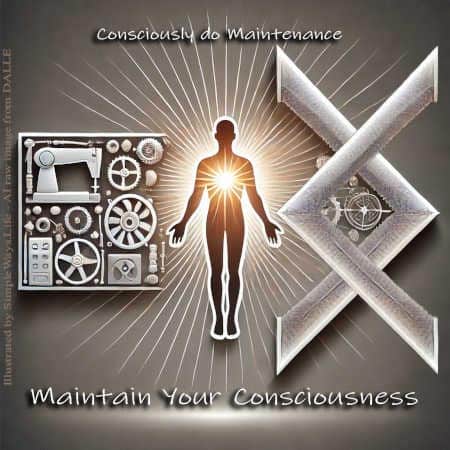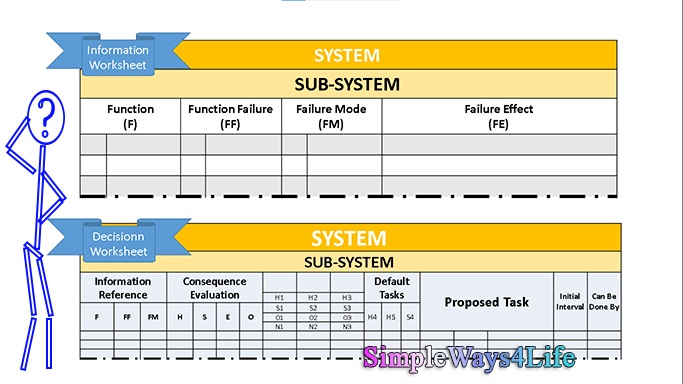We often separate the maintenance of our physical environment from our personal wellbeing. Yet these two aspects of life are intimately connected, forming what we can call “conscious maintenance” – a holistic approach that recognizes how caring for our spaces and ourselves creates a harmonious feedback loop of wellbeing.
What is consciousness?
Consciousness is the foundation of self-realization, an awakening to the true nature of ourselves and the world around us. It’s an awareness not only of our strengths and natural powers but also of our limitations and the environments we interact with. But achieving consciousness is not a one-time event — it’s an ongoing process. Once attained, it must be nurtured and maintained by continuously clearing away the negative effects of our own dark side and the external influences that can cloud our clarity and balance. That’s why we need to maintain our consciousness.

CUSTOMPRICE-TO2JAN26
On the other hand, this principle of conscious maintenance extends beyond our inner lives. It applies equally to the physical assets we rely on — whether it’s our own bodies, the things we own, or the equipment and infrastructure that produce goods and services in the workplace. Conscious maintenance means realizing what these assets need to sustain their well-being, and then acting with intention and care to meet those needs. Just like our personal well-being requires consistent reflection and adaptation, so too does the health of physical assets evolve with time and environmental conditions.
The Dual Nature of Conscious Maintenance
At its core, conscious maintenance embraces two fundamental dimensions that continuously interact with and reinforce each other. When we maintain our physical environment with intention and care, it positively impacts our mental state. Conversely, when we nurture our inner wellbeing, we’re better equipped to create and maintain orderly, functional spaces around us.
Physical Maintenance: Beyond Simple Upkeep
Conscious physical maintenance transcends routine cleaning or fixing things when they break. It involves developing a mindful relationship with our environment, tools, and possessions. This approach includes:
Understanding Your Space: Taking time to truly know your environment, from the subtle signs of wear in your office chair to the optimal organization of your workspace. This deep familiarity allows you to address potential issues before they become problems.
Preventive Care: Regular, thoughtful attention to maintenance tasks, not as burdensome chores but as investments in your future comfort and efficiency. This might mean calibrating tools, updating software, or simply keeping spaces clean and organized.
Sustainable Practices: Making conscious choices about how we maintain our environment, considering both immediate needs and long-term impact. This could involve choosing eco-friendly cleaning products or implementing systems that reduce waste and energy consumption.

CUSTOMPRICE-TO2JAN26
Inner Maintenance: Nurturing the Self
The second dimension focuses on maintaining our mental, emotional, and physical wellbeing through conscious practices:
Self-Awareness: Regularly checking in with ourselves to assess our energy levels, stress points, and emotional state. This awareness helps us respond to our needs before reaching burnout.
Boundary Setting: Creating healthy limits around work, maintenance tasks, and personal time. This ensures we don’t sacrifice self-care in the pursuit of external order.
Skill Development: Continuously learning and improving our maintenance abilities, both practical skills for physical upkeep and emotional intelligence for self-care.
The Synergy of Your Space and Self
When we practice conscious maintenance, we discover that physical and inner maintenance aren’t separate endeavors but rather complementary forces:
Environmental Impact on Wellbeing: A well-maintained physical environment reduces stress, increases productivity, and creates a sense of calm. When our tools work efficiently and our spaces are organized, we experience less friction in daily tasks.
Mental Clarity Reflecting in Your Space: As we develop better self-maintenance practices, our improved mental state naturally leads to better care of our physical environment. Clear minds create clear spaces.
Ritual and Routine: The practice of conscious maintenance creates beneficial routines that serve both our spaces and ourselves. The act of mindfully maintaining our environment can become a form of meditation, while self-care routines help us maintain the energy needed for physical upkeep.

CUSTOMPRICE-TO2JAN26
Implementing Conscious Maintenance
Creating a balanced approach to conscious maintenance involves several key strategies:
- Integrated Planning: Develop maintenance schedules that account for both physical tasks and self-care activities. This might mean alternating between periods of focused environmental maintenance and personal rejuvenation.
- Mindful Observation: Practice regular assessment of both your space and your internal state. Notice how they influence each other and adjust your maintenance practices accordingly.
- Quality Over Quantity: Focus on thorough, intentional maintenance rather than rushing through tasks. This applies equally to cleaning your workspace and engaging in self-care activities.
- Adaptive Approaches: Recognize that maintenance needs change over time. Stay flexible and adjust your practices as your environment and personal needs evolve.
The Workplace Connection
In professional settings, conscious maintenance becomes particularly crucial:
Physical Environment: A well-maintained workplace supports focus, creativity, and collaboration. This includes maintaining equipment, organizing shared spaces, and creating systems that support efficient work.
Personal Wellbeing: Maintaining emotional and mental health at work through breaks, boundaries, and stress management techniques ensures sustained productivity and job satisfaction.
Team Dynamics: When everyone practices conscious maintenance, it creates a positive workplace culture where both physical spaces and personal wellbeing are valued and protected.
Ready to transform your mindset? Click and Get your copy > Now For Sale on Simpleways.life & Amazon
Long-term Benefits
Adopting conscious maintenance as a lifestyle practice yields numerous benefits:
Reduced Stress: When both our environment and inner state are well-maintained, we experience less anxiety and overwhelm.
Increased Longevity: Regular maintenance extends the life of both our possessions and our mental resources.
Enhanced Relationships: The balance we create through conscious maintenance often improves our interactions with others, as we’re operating from a place of clarity and care.
Conclusion
Conscious maintenance represents a paradigm shift in how we approach both environmental upkeep and personal wellbeing. By recognizing and nurturing the connection between our external and internal worlds, we create a sustainable, harmonious way of living and working.
The practice teaches us that maintaining our physical environment with awareness and care directly contributes to our mental and emotional wellbeing, while nurturing our inner selves gives us the capacity to better care for our external world. This reciprocal relationship, when properly maintained, creates a positive cycle that enhances all aspects of our lives.
As we move forward in an increasingly complex world, the practice of conscious maintenance offers a practical and profound way to create balance, reduce stress, and cultivate lasting wellbeing in both our spaces and ourselves.
If you feel you need help with any of these ideas we discussed, request a Management Consultancy or Coaching Services From our Store











